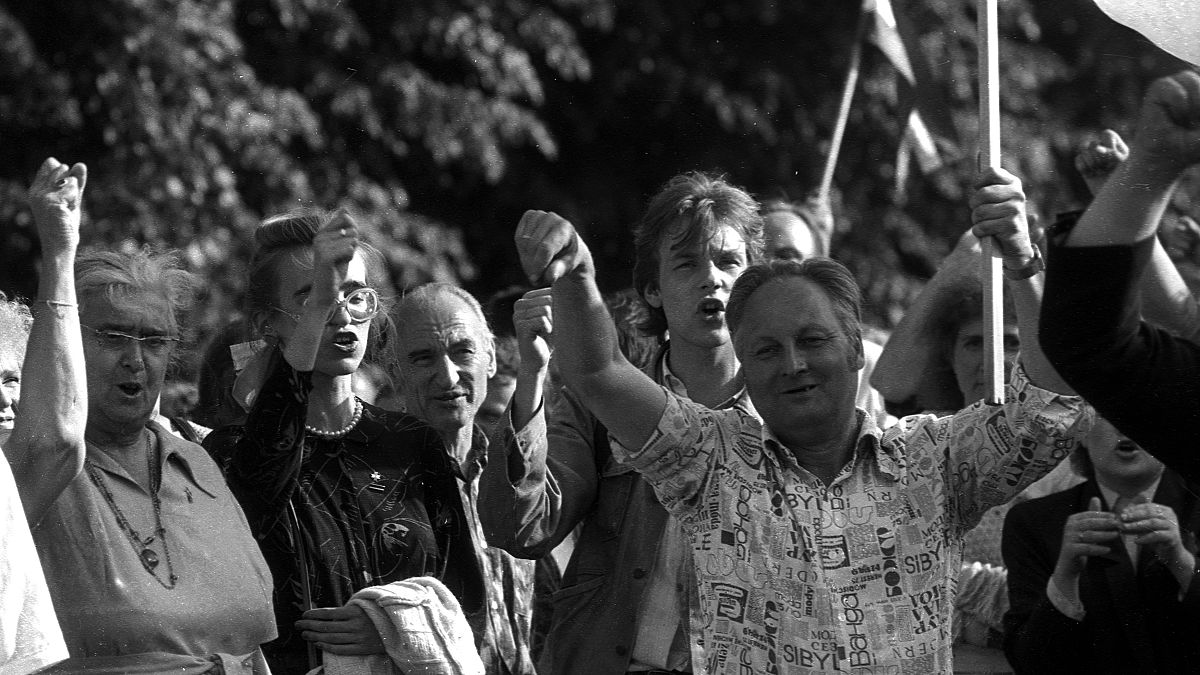Friday marks the 30th anniversary since two million people from Estonia, Latvia, and Lithuania joined hands and made a 600-kilometre human chain that spread across the three Baltic states.
Friday marks the 30th anniversary since two million people from Estonia, Latvia, and Lithuania joined hands and made a 600-kilometre human chain that spread across the three Baltic states.
The event, known as the Baltic Way, happened on the 50th anniversary of the Molotov-Ribbentrop pact (otherwise called the Nazi-Soviet pact) that made the Baltic states part of the Soviet Union in 1939.
The agreement served as a neutrality pact between Nazi Germany and the Soviet Union, which divided Eastern Europe into spheres of influence. It agreed that Poland could be invaded by Nazi Germany without Soviet protest and that Stalin could annex the three Baltic states and Finland.
In August 1989, the three Baltic states were still under Soviet rule. On August 23, 1989 inhabitants of the three countries decided to make their wish for independence heard by joining hands.
Euronews spoke to Andres Kasekamp, a professor of Estonian Studies at the University of Toronto, about the historic event.
Who was behind the Baltic Way?
"The people behind the event were the leaders of the Estonian Popular Front and they did this together with Latvian and Lithuanian colleagues. It was a magnificent display of Baltic cooperation amongst the three peoples," he said.
"It was very important to send a signal to the world because the narrative from Moscow about the Baltic movements of freedom, democracy, and eventually independence was that it was only a small fringe group of extremists, nationalists, who wanted independence.
"But with this chain across all three countries, it was clear that that narrative that Moscow was trying to convince the world of and Soviet citizens was simply not true. This reflected the desire of the vast majority of the people."
How did they organise the chain so it was uninterrupted?
"The organisation of the chain was quite tricky if you put yourself 30 years ago when people didn’t have mobile telephones and there was no social media. So the popular front was a mass movement, which rose after the Singing Revolution in Estonia in 1988 and they had their supporters in every town and city so all the local branches made sure that everywhere along the route there would be someone who would hold hands because in the bigger cities there was a huge mass of people but in the countryside it was much thinner."
What happened immediately afterwards? Was it effective?
"It was one of the rare occasions where the Baltic countries got unto the front pages of international news. It carried the Baltic message of freedom and independence."
Did it lead to the independence of Baltic countries?
"It took several other steps because independence came only in 1991 but you could say that it helped inspire movements to overthrow the Communist regime in Central and Eastern Europe because the fall of the Berlin Wall was three months later."
Fast-forward to today, would you say this is an important day in the Baltic countries? How is it remembered?
"There are festivities in all three countries, exhibits, events, musical performances. It’s also an important milestone for the three countries to reconfirm their own cooperation amongst themselves.
"The Baltic Way has served as an inspiration for other places as well. For instance, a couple of years ago, Catalonia."
How is the event perceived by Russia?
"I’m sure it’s something the Russians would like to forget about from an official government point of view.
"But the important thing is that the Baltic chain took place on the anniversary of the Nazi-Soviet pact and that's something which the current Russian government wants to forget because the Putin narrative is all about the Soviet victory back in the world war and that’s a great source of pride for Russians and the government.
"But they want to forget that at the beginning of the war in 1939 they were practically in alliance with Hitler and helped him carve out Poland. So from that point of view, they don’t want to be reminded of that."
What about for the Baltic states?
"And for the Baltic states, it was an inspiring moment, showing how a peaceful protest can work against an authoritarian regime.
"That people working in an organised fashion and cooperating across borders could stand up for their values and principles, which led to independence eventually."
